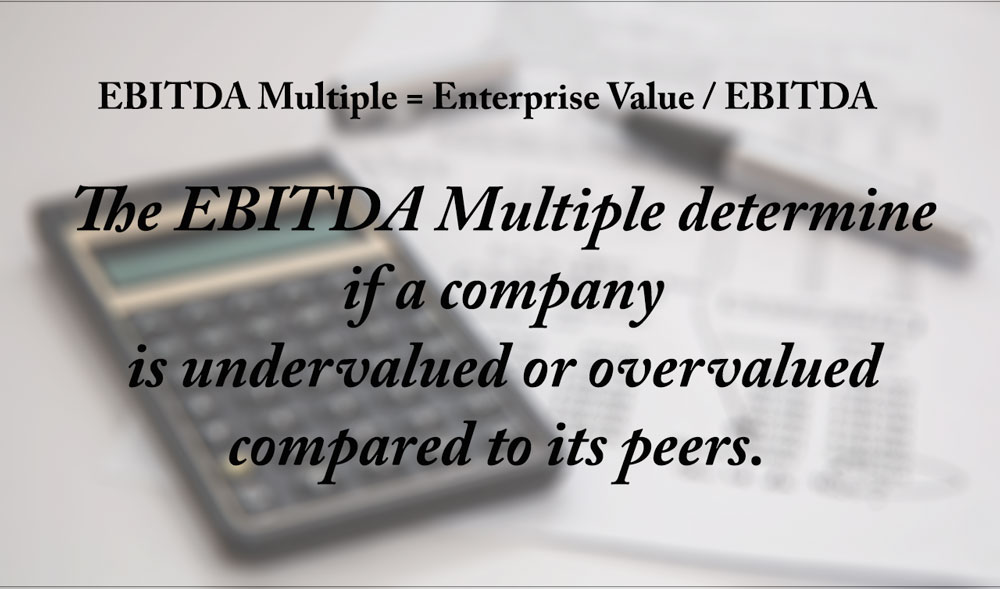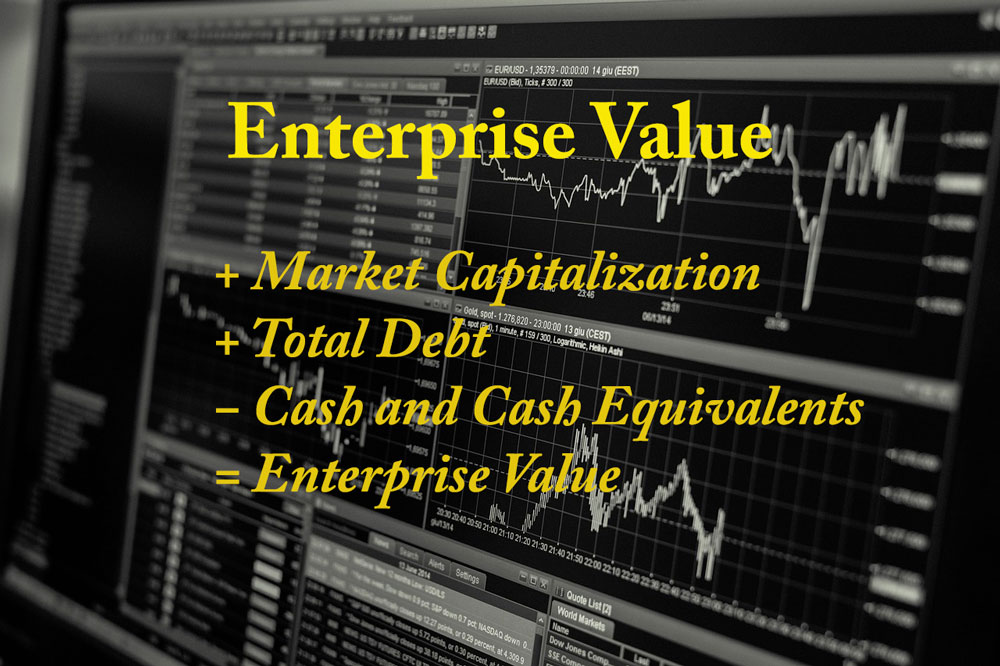Table of contents
- How to use EBITDA to value a company
- Who Uses EBITDA Multiples and Why? A Dive into the World of Valuations
- Why Is It Important to Calculate EBITDA?
- EBITDA Calculation: How to Calculate EBITDA?
- What EBITDA Multiple Should You Use For Calculating Enterprise Value?
- What is Enterprise Value?
- Understanding Enterprise Value and Shareholders Value, the Difference
- How to use the EBITDA Valuation Metric to Assess a Company’s Worth
- What EBITDA Multiple for Acquisition is Used by Industry?
- Adjusted EBITDA
- What is excluded in an EBITDA valuation?
- How Important is the EBITDA Multiple?
- Calculating Enterprise Value
- What Can You Do to Increase Company EBITDA?
- EBITDA Multiples in Business Valuation: Benefits and Limitations
- Know Other Common Private Company Valuation Methods: Asset Based, Discounted Cash Flow, Market Value
- Conclusion
How to use EBITDA to value a company
In the world of finance and company valuation, EBITDA stands as a crucial metric. EBITDA, or Earnings Before Interest, Taxes, Depreciation, and Amortization, offers a glimpse into a company’s operational profitability. But why is it so significant relative to enterprise value? Let’s delve deeper.
Who Uses EBITDA Multiples and Why? A Dive into the World of Valuations
EBITDA, the catchy acronym for Earnings Before Interest, Taxes, Depreciation, and Amortization, is more than just a mouthful. Some look at EBITDA as cash flow. However, many struggle to grasp the true meaning of EBITDA fully. It’s a powerful tool in business valuations and assessing financial performance. But who exactly uses EBITDA multiples, and what drives them? Let’s explore.

When representing a potential buyer or seller, assessing a company’s valuation is critical.
Investment Bankers
Motivation: Investment bankers often play matchmaker, connecting companies looking to merge or acquire with potential suitors. They use a company’s EBITDA to gauge its value, ensuring they set the right price for a deal.
Private Equity Professionals
Motivation: Private equity professionals buy, improve, and sell companies for profit. EBITDA multiples help them determine how much to pay for a company and, later, how much to sell it for.
Venture Capitalists
Motivation: VCs invest in startups and early-stage companies. While these companies might not be profitable yet, their EBITDA can offer insights into their operational performance. Such multiples help VCs value them appropriately.
Business Owners and Entrepreneurs
Motivation: Whether they’re looking to sell their business, seek investments, or even buy another company, understanding EBITDA multiples helps business owners gauge the value of companies in their industry.
Financial Analysts
Motivation: Analysts, whether with banks, investment firms, or independent entities, use EBITDA multiples to compare companies within industries. Leveraging EBITDA multiples helps them make informed recommendations to clients about which stocks to buy or sell.
Corporate Finance Teams
Motivation: These internal teams use EBITDA multiples to assess their company’s performance against industry peers. It helps in strategic planning, especially when considering mergers, acquisitions, or expansions.
Lenders and Creditors
Motivation: Before lending money or extending credit, these professionals want to know they’ll get their money back. EBITDA multiples offer insights into a company’s operational health, helping them make informed lending decisions.
Hence, EBITDA multiples are like the Swiss Army knives of the financial world and are versatile and widely used. From setting acquisition prices to making investment decisions, this metric offers invaluable insights, making it a favorite among a diverse group of professionals.
Whether you’re a seasoned investor or a budding entrepreneur, understanding EBITDA multiples can give you a competitive edge in the dynamic business world.
Why Is It Important to Calculate EBITDA?
EBITDA offers a clearer picture of a company’s operational performance by eliminating the effects of financing and accounting decisions. Moreover, it focuses on the core operations, making it a favorite among analysts and investors to compare companies within the same industry.
EBITDA Calculation: How to Calculate EBITDA?
EBITDA = Net Income + Interest + Taxes + Depreciation + Amortization
What EBITDA Multiple Should You Use For Calculating Enterprise Value?
The EBITDA multiple is a valuation ratio. The ratio compares a company’s enterprise value to its EBITDA. To calculate an EBITDA Multiple, use the following formula:
EBITDA Multiple = Enterprise Value / EBITDA
What is Enterprise Value?

Enterprise Value (EV) is a comprehensive metric used to determine the total value of a company. Consider it the price tag if someone were to buy the entire business, including taking on its debts and getting its cash. It’s more encompassing than market capitalization because it involves more than just the equity value.
Here’s a breakdown:
- Market Capitalization: This is the total value of all a company’s outstanding shares of stock. Calculate market capitalization by multiplying the company’s share price by its total outstanding shares.
- Debt: When acquiring a company, the buyer must take on its obligations. So, adding total debt is added to the market capitalization.
- Cash and Cash Equivalents: Cash and cash equivalents quickly convert into money. If someone sells a company, they would get its cash reserves. Thus, Since cash tends to go with the seller, subtract such assets from the total value.
The formula for Enterprise Valuation is:
EV=Market Capitalization+Total Debt−Cash and Cash Equivalents
In essence, Enterprise value provides a more holistic view of a company’s worth than its stock price or market cap. It considers the complete picture, factoring in debt (which the buyer would inherit) and cash (which the buyer would receive), making it a handy metric for potential mergers, acquisitions, or buyouts.
Understanding Enterprise Value and Shareholders Value, the Difference
Enterprise value represents the total value of a business, including its equity and debt. In contrast, shareholders’ value, often referred to as equity value, is the value that remains after deducting debt and other liabilities.
How to use the EBITDA Valuation Metric to Assess a Company’s Worth
Using the EBITDA multiple, one can estimate a company’s enterprise value. A higher multiple indicates that the market values the company more for each dollar of EBITDA. As a result, Looking at comparable companies becomes more straightforward.
What EBITDA Multiple for Acquisition is Used by Industry?
EBITDA multiples can vary widely by industry. It does not matter whether a business is a middle market company or a large company. For instance, due to growth expectations, tech companies might have higher EBITDA multiple than manufacturing firms.
While specific figures can change annually, consulting industry-specific databases or financial platforms is essential to get the most recent multiples for accurate valuations.
Adjusted EBITDA
Adjusted EBITDA makes further adjustments to the standard EBITDA to exclude one-time or non-recurring items, providing a more accurate representation of ongoing business operations.
What is excluded in an EBITDA valuation?
EBITDA excludes interest, taxes, depreciation, and amortization. However, it doesn’t account for capital expenditures or changes in working capital, which can be significant for some businesses.
The following provides reasons for adding back interest, taxes, depreciation, and amortization expenses to a company’s net income, which is a bottoms-up approach:
Interest EBITDA focuses on operational performance, not financing decisions. Interest expenses arise from a company’s financing structure (how it manages its debt). By excluding interest, EBITDA provides a clearer view of the company’s core operational profitability without the effect of its debt decisions.
Taxes EBITDA aims to measure profitability before the impact of tax regimes. Tax rates and structures can vary widely between regions and countries. Excluding taxes ensures that EBITDA reflects the company’s operations without influencing its specific tax situation or tax planning strategies.
Depreciation EBITDA removes the effects of fixed asset investments. Depreciation spreads the cost of tangible assets (like machinery) over their useful life. By excluding depreciation, EBITDA focuses on current operational results without the drag of past investment decisions.
Amortization EBITDA disregards the costs associated with intangible assets. Amortization spreads the cost of non-physical assets (like patents or trademarks) over their useful life. Excluding amortization allows EBITDA to reflect the company’s operational performance without the influence of non-cash expenses related to intangible assets.
Making top-down adjustments to operating profit is another approach, as shown below:
EBITDA = Operating income + depreciation + amortization
Also, depending on the type of company, adjusted EBITDA should include the seller’s discretionary earnings and expenses to better company value.
How Important is the EBITDA Multiple?
The EBITDA multiple is vital as it provides a relative valuation. It helps investors determine if a company is undervalued or overvalued compared to its peers.
Calculating Enterprise Value
Enterprise Value = Market Capitalization + Total Debt – Cash and Cash Equivalents
What Can You Do to Increase Company EBITDA?
Improving operational efficiencies, reducing costs, and increasing sales are some strategies to enhance EBITDA. Thus, assessing a company’s financial performance highlights the need to review a company’s operating expenses.
EBITDA Multiples in Business Valuation: Benefits and Limitations
Benefits of the EBITDA valuation method
- Simplicity: EBITDA is straightforward to calculate and understand.
- Comparability: It allows inter-industry comparisons by eliminating differences in tax structures, interest expenses, and asset bases.
Limitations of EBITDA multiple
- Ignores Working Capital: EBITDA doesn’t consider changes in working capital, which can impact cash flow.
- Overlooks Debt: Since it adds back interest, EBITDA can sometimes paint an overly rosy picture for highly leveraged companies.
Know Other Common Private Company Valuation Methods: Asset Based, Discounted Cash Flow, Market Value
Various valuation metrics
- Asset-Based: Values a company based on the difference between its assets and liabilities.
- Discounted Cash Flow (DCF): Projects future cash flows and discounts them to present value.
- Market Value: Uses stock market valuations suitable for publicly traded companies.
Conclusion
In conclusion, while the EBITDA Multiple is a powerful tool in business valuation, it’s essential to understand its nuances and limitations. Therefore, consider using a combination of valuation methods to get a comprehensive view of a company’s worth.
#valuation #EBITDA #multiples #operationalperformance #EBITDAMultiple #enterprisevalue
